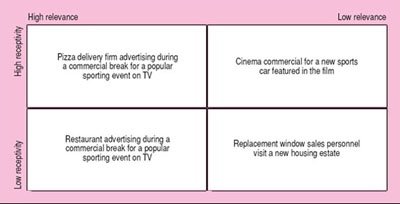3 The changing role of communications: customer preferences
Finding out how customers access marketing communications reveals their preferences in receiving information. As active recipients of brand messages, they can screen out the irrelevant and the inconvenient. Observing their preferences in this regard can be a source of genuine competitive advantage, as demonstrated in Example 1.
Example 1: E-detailing
American pharmaceutical companies spend roughly $8 billion a year on an army of 63,000 sales reps, yet only 60% per cent of their visits to medical practices reach the actual doctor. Only one in ten such meetings lasts more than two minutes. While they need to know about new prescription drugs which might offer benefits to their patients, time-pressure means that salespeople get sidelined.
This is frustrating for pharmaceutical companies in a highly competitive market. The answer is to find ways of reaching doctors more conveniently. Electronic media are proving a popular choice. The American term for telling doctors about new drugs is ‘detailing’ – so the use of new technology for this purpose has swiftly been dubbed ‘e-detailing’, and has attracted a number of specialist communications agencies into the field.
One such firm, ePocrates, sends brief details of new products to doctors via their Personal Digital Assistants – a popular productivity tool amongst American professionals. In keeping with permission-led electronic marketing communication, the system requires an active response from the recipient. If the doctor is interested in the product, he or she sends a message to the manufacturer requesting a fuller brief.
Considering customer preferences makes communications more effective – and more economical. Failure to follow consumers’ changing media preferences can be expensive. 1980s America saw a boom in cable TV audiences while advertisers, locked in their existing patterns of expenditure, continued to chase them on the big networks. The results were spiralling advertising costs in search of diminishing network audiences. Advertisers who made an early entrance into the cable market reaped considerable advantages as a result.
Schultz and Kitchen suggest that a further way of improving communications strategy is to think through the timing and context of messages from the point of view of the customer. When is the message most likely to be relevant? And where is the receiver most likely to be receptive of it? Understanding seasonal trends and purchasing cycles or usage patterns can help us maximise its relevance. But considering customer preferences through the brand contact audit can also indicate the points at which the customer is most receptive to the message. It may be, for example, that you are considering purchasing a new car. Marketing communications from a car dealership are therefore likely to be relevant to you. However, by choosing to contact you at home by telephone when you are preoccupied with domestic matters, the dealership has ignored your receptivity to the message. A direct mail shot, perhaps inviting you to the launch of a new model, might find you in a more receptive frame of mind. Figure 3 illustrates the relevance/receptivity distinction with some more examples.
Activity 2
Review the brand contact checklist you completed in the previous activity. How do the answers reflect the issues of relevance and receptivity? What might the organisation do differently to take these factors into account more effectively?
Answer
You might reason that the difference between relevance and receptivity, at least in practical terms, is difficult to maintain. One way to distinguish them is to think of relevance as related to communication content, and receptivity as related to timing and technique.

